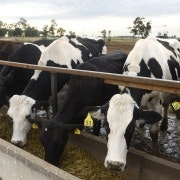Qantas declares a truce, for now
It would be tempting, but premature and perhaps simply wrong, to see Qantas’ announcement today that it would freeze capacity for the first quarter of the next financial year at current levels as a declaration of surrender in its destructive capacity war with Virgin Australia.
For a start, Qantas isn’t planning to reduce the capacity that it has added to maintain its market share as the capacity war has heated up over the past 18 months, but will maintain it. The airline remains as committed as ever to retaining its network and frequency advantage over Virgin.
While there has been a tendency to see Qantas’ 65 per cent “line in the sand’’ objective for market share as an absolute -- and Qantas’ defence of it as suicidal given the volume of red ink flowing through the group -- it has actually been running at around 63 per cent for some time.
What Qantas is committed to is its network and frequency advantage, rather than a precise market share number. The yield premium that generates offsets Virgin's cost advantage.
The decision, in the context of a dramatic dive in consumer confidence and slowing consumer spending, also needs to be compared with what Virgin has been doing.
While its April statistics haven’t been released yet, in March the capacity in the core Virgin branded domestic business actually fell slightly against both the same month last year and for the financial year to date. While the TigerAir brand has been adding capacity, it is off a low base – TigerAir only has 13 planes in its current fleet.
It wouldn’t be surprising if Alan Joyce and John Borghetti came to the same conclusion at roughly the same time, given that both their businesses were haemorrhaging even before the break in consumer confidence began mid-March.
Both CEOs are being urged by shareholders – in Borghetti’s case very publicly by Etihad’s James Hogan – to stop stacking on capacity and exacerbating the losses and Borghetti’s fleet strategy is now more or less completed.
So it makes sense for both groups to behave more rationally in what ought to be, even in a tougher economic environment, a reasonably profitable duopoly.
Borghetti is about to get representatives from his three strategic shareholders – Etihad, Singapore Airlines and Air New Zealand – on his board and one wouldn’t expect any of them to be keen on maintaining a strategy that has turned a domestic market with a profit pool of between about $700 million and $1 billion into one with escalating losses.
Joyce, whose overall business lost $252 million in the first half and who is slashing jobs, costs and capital investment, who has cancelled or deferred orders for new planes and who is considering major asset sales, has already lost his investment grade credit rating and can’t afford any further acceleration of his group’s losses.
The decision to freeze capacity, at least for the first quarter, is presumably contingent on what Virgin does – if Virgin were to again ramp up capacity Qantas would believe it had no option but to respond. Borghetti, however, is too experienced and astute to reignite a capacity war in a deteriorating market.
In fact, Qantas isn’t the only airline in the region reigning in capacity growth or even reducing it. Singapore Airlines has recently reduced its capacity and number of services to Australia and the Middle East.
Meanwhile, budget carrier AirAsiaX disclosed this week that it lost money in the first quarter and Singapore’s Tiger Airways also lost about $20 million in the March quarter to bring its losses for the year to March to about $45 million at an operating level. Its statutory losses were nearly $200 million. The carrier still owns 40 per cent of TigerAir Australia, which has been losing money.
The Asia Pacific region has, since the financial crisis, been the fastest-growing region in global aviation and the Australian market has experienced capacity growth of about 46 per cent since 2009 as carriers diverted capacity away from the troubled European and US economies and towards what was one of the strongest-performing economies in the world. There was the added appeal of the strong Australian currency.
With the Australian economy slowing and the routes into and out of the country plagued with overcapacity the appeal isn’t as strong, particularly as there has been some recovery in the US and European economies.
The end of the tunnel that has engulfed Qantas and plunged it into losses may still be a long way off but at least there are some faint flickers of light and, assuming Virgin acts rationally, some hope of recovering at least some of its once-strong domestic profitability.
















